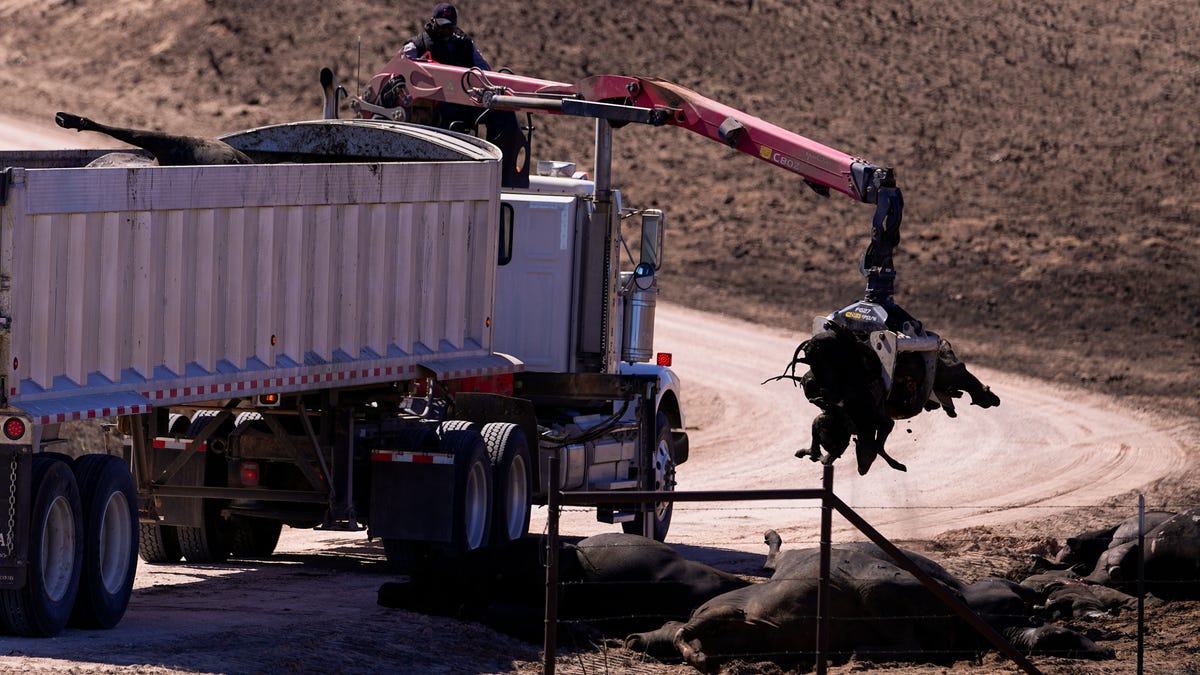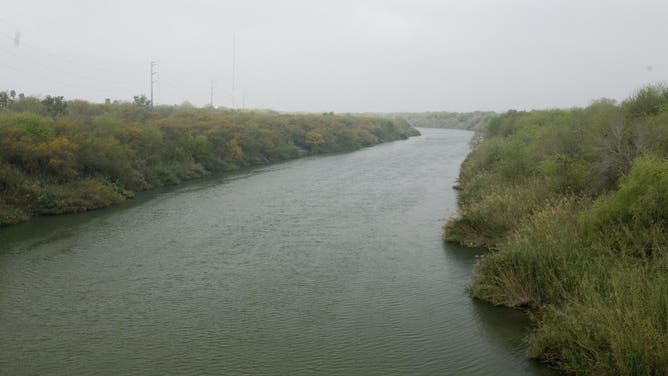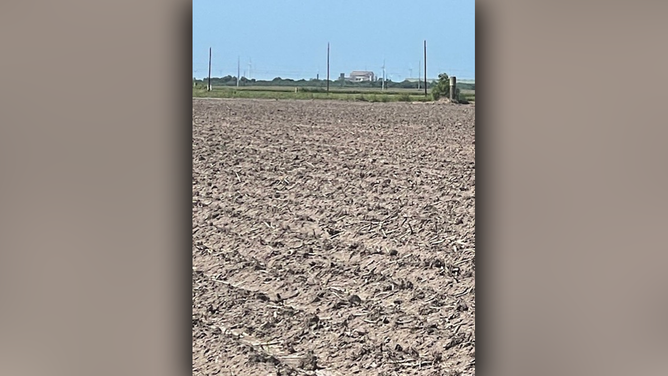Texas
‘Ghastly sight’: Thousands of cattle killed in historic 2024 Texas Panhandle wildfires

“It’s a ghastly sight,” Sid Miller, commissioner of the Texas Department of Agriculture, told USA TODAY.
Texas panhandle wildfires burn cars, buildings
The Smokehouse Creek Fire has become the largest fire in Texas history.
Thousands of livestock have been killed in the wildfires that’ve ripped across the Texas Panhandle over the last week, inflicting unprecedented damage upon the largest cattle region in the nation.
Officials surveying the damage said more than 3,600 cattle have died since the fires – some of which are still ongoing – spread through multiple counties and into Oklahoma, destroying hundreds of homes and killing at least two people. The number of dead cattle is expected to double or triple in the coming days as inspectors continue inspecting the land and animals are euthanized because of burn injuries and trauma, Sid Miller, commissioner of the Texas Department of Agriculture, told USA TODAY.
“It’s a ghastly sight,” Miller said, recounting hundreds of cows lying dead on smoldering fields. “We’ve never seen anything like this.”
The largest of the blazes, the Smokehouse Creek fire, burned more than 1 million acres of land, an area larger than the state of Rhode Island, and is the largest wildfire in state history. While authorities have not said what caused the fires, citing early and ongoing investigations, a lawsuit filed in county court last week alleged that a downed utility pole in Stinnett was to blame.
Texas is home to 11 million livestock animals and 85% are in the panhandle, making it the country’s most prominent region for beef production, Miller said. The mass deaths likely won’t impact the price of beef around the nation, but it has already devastated local ranchers, many who’ve maintained businesses that have been in their family for generations, he said.
“They’ve lost their livestock, ranches, all their belongings, all their family heirlooms,” Miller said. “Many of them just have the shirt on their back.”
The Smokehouse Creek fire quadrupled in size in less than 48 hours, catching officials, civilians and farmers off guard and unable to prevent widespread damage. Miller said several large ranchers cut down their own fences so their livestock could escape into surrounding wheat fields; other farmers barely had enough time to get themselves out alive.
Dozens of nearby residents joined the massive recovery effort, donating money, food and equipment to their neighbors. Trailers packed with hay, feed and other supplies have answered the urgent need for vital sustenance as the wildfires consumed the cattle’s primary food source.
“This is ranchers helping ranchers,” said Jason Smith, a beef cattle specialist and associated professor for Texas A&M University. He noted that some farms were untouched or suffered little damage, while others were completely destroyed.
Several nearby ranches have loaned out tractors and other heavy equipment needed to pile up and transport the corpses of cattle before they’re buried or incinerated. Chance Bowers, who operates a ranch in Hansford County, about 80 miles northeast of Amarillo, said such equipment was used to move hundreds of cattle who died either from burns or smoke inhalation.
“We were right in the middle of calving season,” Bowers said. “In a few weeks, we’ll really know what we lost. … This pasture alone, there’s 70 dead.”
Though the fires are still ongoing, local officials said they’ve seen enough damage to know recovery won’t come quickly.
“A lot of these people are going to have to sell,” Miller said. “They have no grass, no infrastructure, no fences, no cattle. They’ll sell and wait for better days. … It’ll take a couple of years to get things back in shape.”
Contributing: The Associated Press; Lubbock Avalanche Journal, part of the USA TODAY Network

Texas
Deep East Texas community raising 77 foster care kids gets movie made about them

POSSUM TROT, Texas (KLTV) – In the Pineywoods of Shelby County resides a community of families that embraced some of the most difficult-to-place kids in the foster care system. Over 20 years later, they’re getting a movie made.
First Lady of Bennett Chapel Baptist Church, Donna Martin, said it all started back in 1998 in the small town of Possum Trot.
“It was a hurting… and a calling,” Martin said.
A calling to adopt. With the support of her husband, Bishop W.C. Martin, they started the process, ultimately taking in four kids on top of their two biological ones.
“Because no child, no child, anywhere in this world deserves to not have a loving, caring home,” said Lady Martin.
But that mission to change the life of these kids grew into something much bigger than they ever expected.
Over the years, their example and building of community for adoptive families within their church led to 22 families adopting 77 kids.
“They saw what we as leaders, were not just preaching but setting an example,” Martin said.
Nearly all kids within their local foster care system ended up getting a home. Bishop Martin recalls hearing the moment a worker shared the impact they’d made.
“Susan said, ‘Well, Bishop Martin, I’m telling you that there’s not another child within 100-mile radius of Possum Trot.’”
CPS Regional Director Lori Sutton-White was involved in connecting a group of five sisters to one of the families. She says she’d never seen anything like Possums Trot’s movement.
“At that time, we just did not have the kind of movement where you saw an entire church or entire community come together,” Sutton-White said.
This community’s mission is to serve as an example of a possible solution to the current foster care crisis.
Bishop Martin said, “If every church would take two or three children. Every church. I don’t care if you got 20,000 members or you got two members, if every church would take two, we would empty this system… just like that.”
That’s something Sutton-White agrees with.
“We wouldn’t have a need for foster care. We would have more than enough for our children,” she said.
That message is now coming to the big screen. The Martins said Sound of Hope has been in the making for about 10 years and will depict their real-life experiences, and even reveal where some of the adopted kids are today.
As for the ones they took in, Lady Martin shared they’re doing great. She said some are currently practicing their careers while others have started families of their own.
“The greatest reward that we receive is to look at their lives where they are today,” she said.
Sound of Hope will come out in theaters July 4th.
For more information on East Texas kids available for adoption, please email hello@heartgalleryetx.org.
Copyright 2024 KLTV. All rights reserved.
Texas
Drought shuttered Texas' last sugar mill. Now, farmers are asking which crop is next?

England Cattle Company in Mercedes, Texas is facing a challenging situation. A 40-acre field that was once flourishing with sugar cane plants, cotton and corn is now dry and desperate for water. Farmer and owner of England Cattle Company, Michael England, joins FOX Weather.
MERCEDES, Texas – The last sugar mill in Texas shut its doors last month, citing a lack of water. Farmers were left to plow under the crop and wonder what drought would claim next.
That forced farmer and cattleman Michael England to destroy his 500 acres of sugarcane. The fertile fields remain empty, though, due to the lack of water. He only planted a fraction of other crops like cotton, sorghum (cereal grain) and corn on his remaining 2,500 acres.
“As all irrigated farmers, what we really need – the water – is in our dams… we just had no inflows,” said England, owner of England Farms and England Cattle Company. “We’ve only got just a few of our acres planted this year, and it’s just a big gamble that we’ve taken of even planting those.”
The 500 acres where England ripped out sugarcane remain barren because he has no water to plant new crops with.
(England Farms and Cattle / FOX Weather)
Drought causing crop failure
His row crops are 100% flood-irrigated. The water comes from the Rio Grande, about 10 miles from the farm. But with no upstream rain, the Rio Grande Basin dropped to record low levels recently, according to the National Weather Service and local media.
“Our water has been cut back over the last three years, but this is the worst I’ve ever seen where we’ve basically had zero water to work with,” England said.
“Our weather patterns have been changing over a number of years; (drought) in 2002, 2008, again in 2011, which, by the way, 2011 trumped the 1955 drought as far as statistics are concerned,” he added. “But then here we are back in a severe drought again. You’re (year) number three into it.”
EXTREME HEAT THREATENS CROP PRODUCTION IN TEXAS

The corn crop “is in really bad shape” according to England.
(England Farms and Cattle / FOX Weather)
Texas Gov. Greg Abbott has extended a disaster proclamation for much of south Texas, “certifying that exceptional drought conditions posed a threat of imminent disaster in several counties.” It was issued in July 2022 at the start of the most recent drought.
Lack of water from Water Treaty with Mexico
Another source of water is Mexico through a 1944 water treaty.
“Our main water source is the Rio Grande River, which is also an international boundary with Mexico,” England said. “It’s water that is shared by Mexico via the 1944 treaty that was there. And that water is pumped out of the river that goes to various water districts, spread out across the valley. And then we receive it through pipelines and canals. But as of right now, all of that water has been taken away from us and only for municipal use.”
Complete lack of irrigation water for crop production in the Lower Rio Grande Valley would cost $495.8 million in direct revenue loss, Texas A&M University has calculated.
TEXAS DROUGHT, DRY HEAT LOWERING COTTON QUALITY

File: The Rio Grande River dividing Reynosa, Mexico (L) with Hidalgo, Texas in the United States (R).
(Robert Daemmrich Photography Inc/Corbis / Getty Images)
In exchange for U.S. water deliveries from the Colorado River, Mexico agreed to deliver water to Texas from several tributaries feeding the Rio Grande, according to the treaty. Every five years, Mexico must release 1.1 million acre-feet of water, which averages out to 350,000 acre-feet a year.
The Texas Farm Bureau pointed out that the country is behind over 736,000 acre-feet of water since the new cycle started in October 2020. That would mean delivering the equivalent of three-and-a-half years of water in the next year and a half.
The owners of the last sugar mill in Texas, along with other farmers, blame politics.
“Agriculture in the Rio Grande Valley depends on adequate and reliable irrigation water deliveries,” the mill said in a press release when it closed. “For over 30 years, farmers in South Texas have been battling with Mexico’s failure to comply with the provisions of the 1944 Water Treaty between the U.S. and Mexico that governs water sharing between the two nations on the Colorado River and the Lower Rio Grande.”

Dried out crops.
(England Farms and Cattle / FOX Weather)
Mexico cites its own water problems due to drought.
“Right now, we do have a delay in water deliveries, that’s the reality this current cycle, but our intention is to mitigate that deficit as much as possible,” Manuel Morales, secretary of the Mexican Section for the International Boundary and Water Commission Between Mexico and the United States told the Texas Tribune. “We want to continue complying with the treaty.”
Out of his 2,500 acres, England only planted 500 acres of cotton and 120 acres of sorghum grain. The cotton is “still holding on” but stunted because of the extreme drought. His grain crop is in “bad shape,” with shallow roots, “the crop is burning up,” he said.
HOW TO WATCH FOX WEATHER

The grain crop is in “bad shape,” according to England.
(England Farms and Cattle / FOX Weather)
“I just told myself, doesn’t make grain, I’ll make hay out of it for our cattle operation,” England said. “But, all the rest of the land is just sitting there idle.”
Texas is the top exporter of cotton in the country. In 2020, the state exported $1.7 billion. The Lone Star State exported $5.8 billion in agriculture in 2020, the sixth highest in the U.S., according to the state comptroller.
Texas
Texas A&M Expanding Initiative Aimed At Curbing Textbook Costs

Texas A&M University’s established course affordability efforts are credited with saving students an estimated $1.2 million this academic year by using Libraries-purchased materials as replacements for traditional textbooks.
Adobe Stock
Efforts aimed at saving Texas A&M University students money on the increasing cost of textbooks are set to expand.
The university’s established course affordability efforts are credited with saving students an estimated $1.2 million this academic year by using Libraries-purchased materials as replacements for traditional textbooks.
Texas A&M University Libraries recently hired Jennifer Pate to build on that success to create an even greater impact through OpenEd, a program launched at the start of 2023-2024 school year using funds from the Office of the Provost.
“I’m thrilled to join a library system and a university focused on student success,” said Pate, who has considerable experience with open educational materials, most recently spearheading efforts at the University of Northern Alabama. “The cost of textbooks and course materials has increased steadily at universities worldwide. OpenEd addresses the issue head-on by embracing and advocating for the use of open educational resources.”
Texas A&M University Libraries has hired Jennifer Pate to lead OpenEd, a program aimed at saving students money on the increasing cost of textbooks and course materials.
Texas A&M University Libraries

The course material affordability unit, housed in the Libraries:
- identifies low- to no-cost course materials;
- supports faculty who adopt, adapt and create open educational resources (OERs);
- increases awareness of program funding opportunities;
- and assesses the program’s impact on student success
As OpenEd grows under Pate’s leadership, savings are expected to increase exponentially, with new program-focused librarians and technical staff.
“OpenEd will help keep course materials affordable for current and future Aggies,” said Dr. Alan Sams, provost and executive vice president. “That is our objective, and that is a top priority for our libraries.”
Working alongside expert librarians, faculty, academic support professionals and campus partners, OpenEd is charged with expanding the OER movement on the Texas A&M campus and making Aggieland a national leader in the course affordability movement.
“Our existing, longstanding offerings for course reserves, open educational resources and open access materials have helped to make courses more affordable,” said Julie Mosbo Ballestro, university librarian and assistant provost. “OpenEd will consolidate those resources with enhanced, university-level focus and additional resources. I’m excited about the creation of positions dedicated to a program that will cut costs for students.”
Savings generated through OER efforts will vary depending on majors, but with more than 70% of Texas A&M students receiving some kind of financial aid, even modest cost reductions can help.
“With the ever-increasing costs of housing, transportation and food on top of tuition, it’s no secret that budgeting for four years of college is difficult,” said Ben Fisher ’24. “The university’s efforts to reduce our educational expenses mean a lot to us and can help ease the competing pressures between focusing on our studies or striving to make ends meet to pay bills.”
After three years, the Libraries hope to expand OpenEd for students throughout the Texas A&M University System.
“University Libraries continue to innovate and find new ways to serve students, faculty and staff,” Mosbo Ballestro said. “OpenEd is a game changer that will keep courses affordable for all Aggies. That’s something all of us care about deeply.”
-

 Politics1 week ago
Politics1 week agoHouse Dems seeking re-election seemingly reverse course, call on Biden to 'bring order to the southern border'
-

 World1 week ago
World1 week agoStand-in Jose Raul Mulino wins Panama presidential race
-

 News1 week ago
News1 week agoCompass Direct LLC’s 2024 Registration in North Carolina
-
News1 week ago
UCLA to resume in-person classes after Gaza protest crackdown
-

 World1 week ago
World1 week agoTech compliance reports, Newsletter
-

 News1 week ago
News1 week agoColumbia University cancels its main commencement ceremony after weeks of turmoil
-

 News1 week ago
News1 week agoMan, 75, confesses to killing wife in hospital because he couldn’t afford her care, court documents say
-

 World1 week ago
World1 week agoPentagon chief confirms US pause on weapons shipment to Israel




















